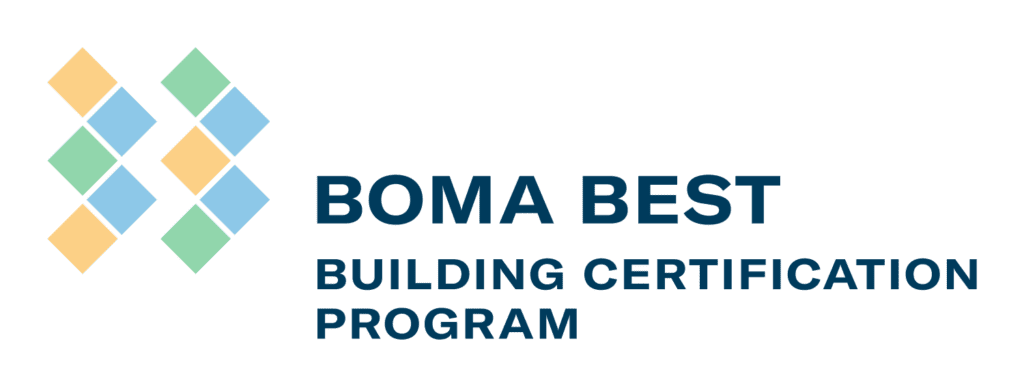How does AI expand our intelligence, enhance our capabilities, and help us move beyond sustainability?
First, it is important to acknowledge we are all coming out of a very hard time and continue to deal with some very large issues. COVID-19 is still influencing our daily lives, as is climate change, and we are living in a chaotic, politically charged and conflicted world. And while many are trying to hold on, get through, and maintain the status quo, we are fortunate to work in an industry where there are more than a few people who understand that change is not a choice and that embracing the chaos is an imperative. Through this time of uncertainty, we need to lean in, and this has created a hotbed for innovation within commercial real estate. They understand that we are entering a new age of intelligence, one that can give us the tools and resources to do significantly more than react to a perceived problem but rather arrive at data-driven effective solutions. And AI is the driver, with every company feeling compelled to use it.
- A Distributed Future
One of the most significant benefits of AI is what is being called the creation of a distributed future. AI’s accessibility through platforms such as ChatGPT has given agency to anyone who wants to participate in the conversation. Innovation can now happen at all levels and be affected by all voices. There is no longer the limiting need to follow that one brilliant person now that we have created another form of intelligence. Although it is called artificial intelligence, a more correct name would be collected intelligence, as it is all our collective knowledge and experience.
The fact that it demands inclusivity is not just a nice idea; it’s table stakes. We need all the different voices, not just the usual ones. Women must have a clear voice, as do creatives, those under 30, and deep domain experts. It’s part of the new consciousness. And that would allow us to integrate both vertical and horizontal AI, with vertical AI being a deep understanding and integration of domain-specific knowledge and horizontal being a broad-global understanding of a subject matter. The result is an ability to integrate deep domain understanding with a reasoning engine. It also allows for the future needs to be more evenly distributed considering all the different voices. No longer do a limited number of people control the future.
- Nature’s New Voice
This gives us emotional intelligence and collective or artificial intelligence, but what about nature? Where does natural intelligence fit in?
Historically, nature has been viewed as an endless resource that could be taken from and dumped back into. Now, we can be more specific as to what we are taking from, creating with, and returning to. Now, we have the resources to understand how nature works and the consequences of our actions. It is time for every CEO to have a mandate that includes nature. There is a real movement for Chief Sustainability Officers to grow into Chief Nature Officers, whose role is ensuring nature is a part of every decision. And it’s a positive thing, not another thing that impedes us.
And there are already some easy examples to look at AI’s impact on agriculture regarding what is planted, where, when, and how is a perfect example. It makes the Agri-industry much more ecologically friendly, efficient, and effective. It truly reflects the ideas of planet, people, and profit. For Apple Computers, which has one of the most complex supply chains, to come out both literally and figuratively to having nature on their board and commit to achieving carbon neutrality by 2030, including their supply chain, is a significant shift in corporate conscience.
The result will be a perfect trifactor of emotional intelligence, environmental intelligence, and machine intelligence, where Nature might become the arbitrator of man vs. machine—the additive role of artificial intelligence, natural intelligence, and emotional intelligence. We do not have a real connection between ecology and the economy.
- Moving Beyond Sustainability
By aligning human intelligence with artificial intelligence and natural intelligence, we have the perfect trifactor. We are no longer trapped in the imperfect “problem-solution” paradigm as the sole driver of innovation.
For too long, we’ve seen the future as something that happens to us. This is about to change. And this more intelligent future will now allow us to move beyond sustainability. If one were to take a step back from sustainability, it would be seen as an imperfect paradigm. It effectively trapped us in a situation where we must fix our world rather than expand it. To clarify, “expanding” does not mean using more of our natural resources. It means moving beyond the “problem-solution” paradigm as the sole driver for innovation. Sustaining something is counterintuitive to who we are. Nature is an incredibly aggressive innovator. It continues to evolve and adapt. Humans are the same.
By leveraging the vast tools that are now available, we can unlock our understanding and knowledge to free more of our resources in a positive way. All of this will expand what is possible. It will create new realities that don’t necessarily fight existing behaviours but give intelligent options, allowing us to find a better direction—one that is beyond sustainability.
It comes down to how we prioritize and develop these tools and resources that AI presents us with. And how do we build the right business models that continue to grow, are scalable, and succeed while prioritizing people, profit, and the planet.


